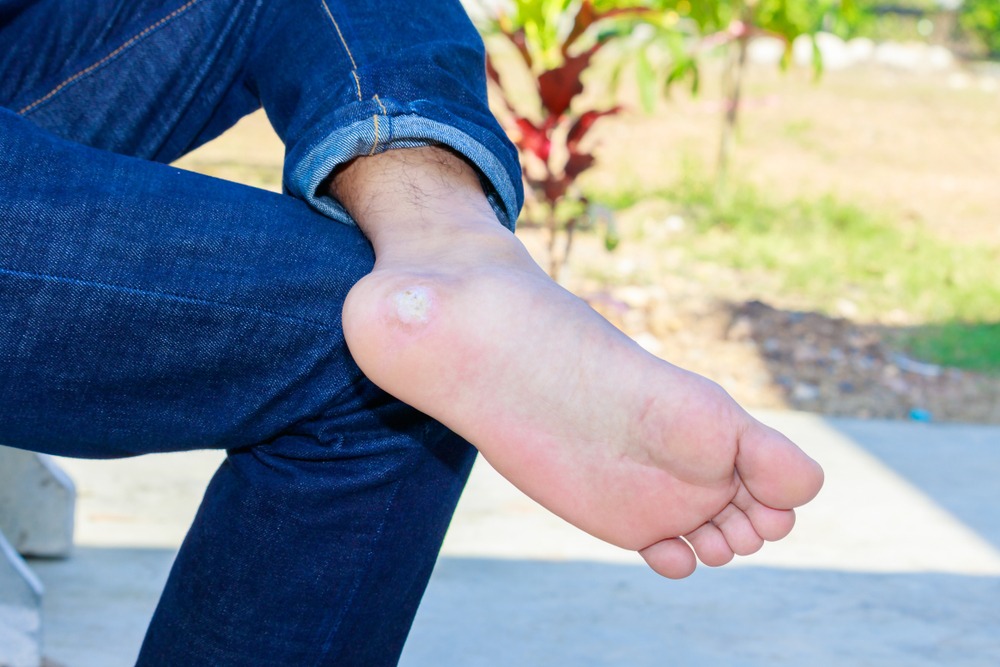
A plantar wart is a benign tumour on the surface of the skin. Caused by the papillomavirus, it often looks like a lesion on the bottom of the foot. Unlike warts found elsewhere on the body, plantar warts produce growths inside the skin rather than on the skin’s surface. It’s common for them to be mistaken for corns or calluses, and sometimes they’re so inconspicuous that they go entirely unnoticed. Conversely, they can show up on pressure points of the foot, producing pain or discomfort from infected cells below the skin’s surface. It’s often these infected cells that lead to a consultation. Overall, plantar warts are safe for people without specific health problems. Podiatry clinics offer several ways to remove plantar warts.
Types of plantar warts
There are essentially two types of plantar warts, both highly contagious. They can be identified by their shape and the degree of discomfort they produce. The most common of the two is Myrmecia. These warts have their bases deeply embedded in the epidermis. The visible part of the wart looks like a ring of skin with tiny black dots in the centre. They are more painful, producing a pricking sensation, a feeling of pressure or burning, and sometimes minor bleeding. Myrmecia is often located in areas of the foot that touch the ground, which can hinder walking.
The second type, the Mosaic art, is less painful—if painful at all. It has a rough, dry appearance due to an accumulation of keratin. This variety is more visually recognizable, appearing as a series of plaques. In both cases, your chiropodist can determine the best way to remove them to prevent contaminating family members.
Who gets plantar warts, and how do they spread?
Small wounds, cracks, or abrasions on the skin’s surface are ideal entry points for plantar warts. It’s possible to get one at any age, but children and young adults are the most susceptible. Again, they’re mostly safe; however, if you’re diabetic or immunocompromised, take extra care and visit a chiropodist as soon as possible to avoid aggravation.
Because the wart virus is more easily introduced into waterlogged skin, warm and humid environments are conducive to infection. A subject who suffers from excessive sweating of the feet may be more vulnerable to plantar warts. Contamination occurs when a person carrying the virus comes in contact with the skin of another. It’s also possible to catch the virus by touching a surface contaminated with it, such as the floor of a public space.
Lastly, never scratch or cut the skin of the affected foot, as doing so can lead to proliferation.
Treatments for plantar warts
Considering how contagious plantar warts can be, it’s recommended to consult a chiropodist to prevent spreading. Several methods exist: drug-based treatments, laser treatment, and the Swift method.
● Cantharone plus or Canthacur PS is a prescription drug treatment that a healthcare professional must apply. It attacks the virus by targeting the deep layers of the epidermis. It takes several applications before the wart disappears, and a follow-up by the chiropodist is necessary to check the healing.
● Laser treatments refer to minor skin surgery on the foot that removes the wart. This method eradicates the wart faster than Cantharone applications.
● The Swift method is a non-invasive and very effective treatment. It stimulates the body’s immune response via small, targeted shock waves. This method does not create skin lesions, allowing the patient to return to business quickly.
Prevent plantar wart recurrence by visiting a chiropodist
Throughout Ontario, FootNetwork podiatry clinics have the technologies to remove your plantar wart and prevent its recurrence. A consultation assesses the extent of your illness and determines the most appropriate treatment. Contact us for more information.

